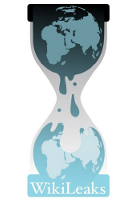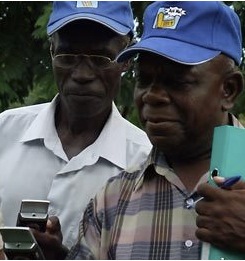
As a person living with type 1 diabetes, technology has been a medical part of my daily life for more than ten years. Diabetes is largely a self-managed disease, meaning that the person living with diabetes must manage the day-to-day balance between severe short-term effects and equally severe long-term effects. Technology can be a great help in this – in the last ten years I’ve tried at least about ten different types of blood glucose meters, four different insulin pumps, and I am always wearing a continuous glucose monitor.
I’ve also tried some of the mobile apps available to assist with diabetes management – tracking blood glucose levels, calculating carbohydrate and the amount of insulin to take with each meal, recording exercise events and so much more. I know I’m not the only one who has tried these devices; when technology plays a part in your own chronic disease management, you tend to incorporate technology from non-medical devices as well.
It should be no surprise to me, then, that a popular Twitter Chat group organized as Diabetes Social Media Advocates, or #dsma, recently devoted an entire hour-long discussion to the topic of mHealth earlier this month. Questions ranged from “What would you like your mobile device to help you with managing your diabetes?” to “What are your thoughts on the FDA regulating mobile apps that uses platforms for medical device functions?”
The answers were all over the place – some people weren’t interested in using their mobile phones for anything but making calls and receiving email, others wanted to see all of their devices, including medical devices and mobile phones, have the ability to communicate with one another. One person even said that he’d love a phone that could take a picture of a meal and estimate the amount of carbohydrate for you. Initially he was joking, but someone quickly told him that that function is in development, although struggling with accuracy right now.
Of all the topics and crazy ideas that came up, only one question received consensus: “Does mHealth have the potential to change the way we take care of our health or manage diabetes?” Everyone answered yes. But these are all smartphone-owning, diabetes-tweeting, tech-savvy folks. What about the rest of the 346 million people with diabetes around the world?
A quick check at the HUB Database will show you that 15 technologies, programs, and organizations have contributed to the database and tagged diabetes. Some focus on medication reminders, others provide vital information to health care workers. One program even developed a game-like system that monitors interaction with a virtual pet to let friends or relatives know that the person is active – allowing more opportunity for an independent lifestyle.
This is one of the great aspects of mHeatlh: it focuses on the health problems and identifies innovative solutions. Not remembering to take your meds? Your phone can help! Not checking in with your loved ones despite the fact you could fall into a coma? Your digital pet can help! In this day and age, when 70% of mobile phone subscriptions are in developing countries, phones can be seen as health tools – especially for those of us with self-managed diseases.









































